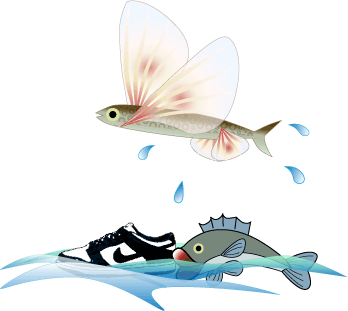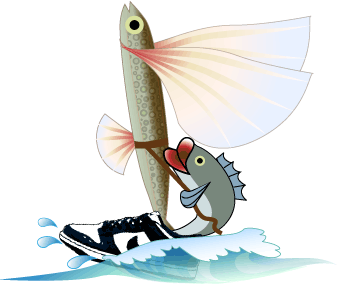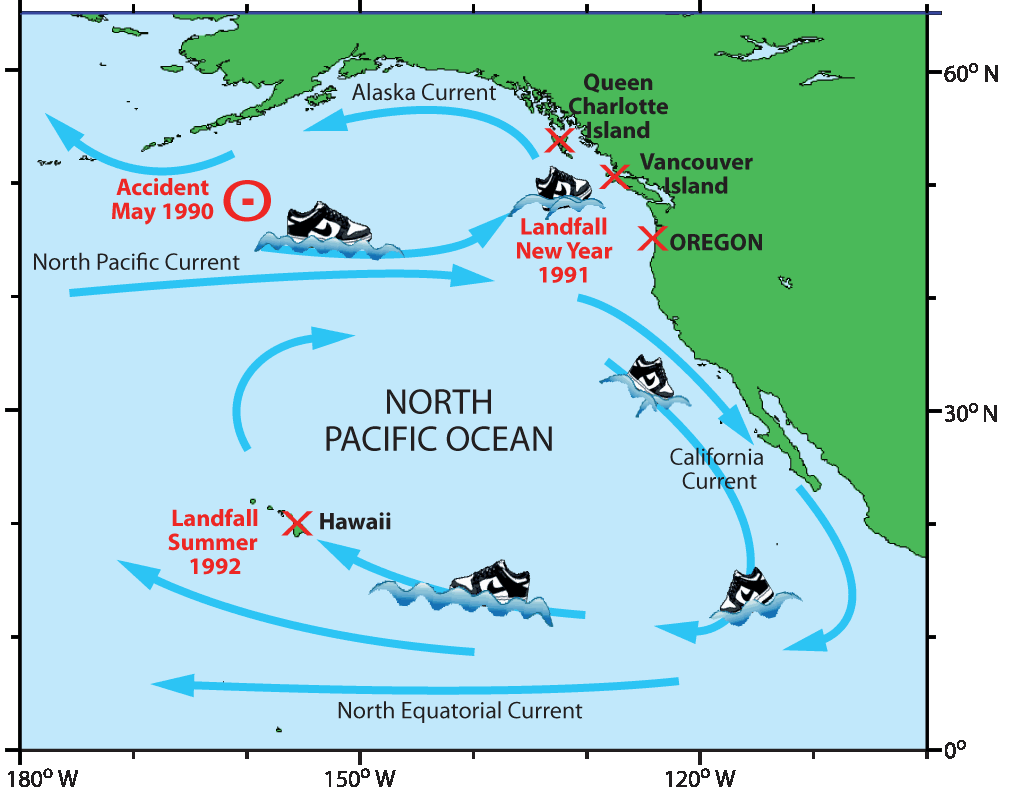1. Nike Trainers and Rubber Ducks
Going with the flow
In May 1990 a storm south of Alaska knocked 21 containers off the Hansa Carrier, a container ship on its way from Korea to the USA. Five containers broke open, releasing some 61,000 trainers and boots into the north Pacific.
The following winter hundreds of shoes washed ashore on the beaches of British Columbia, Washington and Oregon.
Fair enough, the trainers drifted with local currents from the storm location to the coast, but was this the nearest bit of land? They took 8 months or so to get there.
In the summer of 1992 shoes started to arrive in Hawaii. How did they get there and why did they take another ten months? The distance from the accident spot to Hawaii isn’t that different from the distance to the Pacific coast of North America.
So what has this to do with ocean currents?
Well, each shoe had a unique, listed serial number, and the position of the accident was known from the ship's log. This made it the largest ever release of numbered "drifters" into the ocean.
Drifters are one of the tools used by oceanographers to study the movement of ocean currents. Computer simulations (numerical models) are also used, but we need to be sure that the models are behaving as the real ocean does, so oceanographers compare model predictions with drifter behaviour.
Oceanographer Carl Ebbesmeyer and his colleague Jim Ingraham used the trainers to help validate a model known as the Ocean Surface Currents Simulator (OSCURS).
OSCURS predicted that most of the shoes would make landfall on the northern tip of Vancouver Island and the coast of central British Columbia about 249 days after the accident. The first reports of shoes on Vancouver Island came in after 220 days.
Later many shoes were also recovered in Queen Charlotte Island and in North Oregon, indicating that when the shoes reached the coast, some were diverted northwards and some southwards along the coast.
In all 1600 shoes (2.6%) were found and reported by beachcombers. Compared with planned releases of drift bottles 2.6% is a pretty good return. Typically only 1-2% of the drifters are usually recovered.
...and rubber ducks?
Another accidental drifter story that captured the world's imagination.
Can you distinguish fact from fiction in the tale of the bath-tub toys?




